Data Structures and Algorithms
- Introduction to Data Structures and Algorithms
- Time and Space Complexity Analysis
- Big-O, Big-Theta, and Big-Omega Notations
- Recursion and Backtracking
- Divide and Conquer Algorithm
- Dynamic Programming: Memoization vs. Tabulation
- Greedy Algorithms and Their Use Cases
- Understanding Arrays: Types and Operations
- Linear Search vs. Binary Search
- Sorting Algorithms: Bubble, Insertion, Selection, and Merge Sort
- QuickSort: Explanation and Implementation
- Heap Sort and Its Applications
- Counting Sort, Radix Sort, and Bucket Sort
- Hashing Techniques: Hash Tables and Collisions
- Open Addressing vs. Separate Chaining in Hashing
- DSA Questions for Beginners
- Advanced DSA Questions for Competitive Programming
- Top 10 DSA Questions to Crack Your Next Coding Test
- Top 50 DSA Questions Every Programmer Should Practice
- Top Atlassian DSA Interview Questions
- Top Amazon DSA Interview Questions
- Top Microsoft DSA Interview Questions
- Top Meta (Facebook) DSA Interview Questions
- Netflix DSA Interview Questions and Preparation Guide
- Top 20 DSA Interview Questions You Need to Know
- Top Uber DSA Interview Questions and Solutions
- Google DSA Interview Questions and How to Prepare
- Airbnb DSA Interview Questions and How to Solve Them
- Mobile App DSA Interview Questions and Solutions
DSA Interview Questions
- DSA Questions for Beginners
- Advanced DSA Questions for Competitive Programming
- Top 10 DSA Questions to Crack Your Next Coding Test
- Top 50 DSA Questions Every Programmer Should Practice
- Top Atlassian DSA Interview Questions
- Top Amazon DSA Interview Questions
- Top Microsoft DSA Interview Questions
- Top Meta (Facebook) DSA Interview Questions
- Netflix DSA Interview Questions and Preparation Guide
- Top 20 DSA Interview Questions You Need to Know
- Top Uber DSA Interview Questions and Solutions
- Google DSA Interview Questions and How to Prepare
- Airbnb DSA Interview Questions and How to Solve Them
- Mobile App DSA Interview Questions and Solutions
Data Structures and Algorithms
- Introduction to Data Structures and Algorithms
- Time and Space Complexity Analysis
- Big-O, Big-Theta, and Big-Omega Notations
- Recursion and Backtracking
- Divide and Conquer Algorithm
- Dynamic Programming: Memoization vs. Tabulation
- Greedy Algorithms and Their Use Cases
- Understanding Arrays: Types and Operations
- Linear Search vs. Binary Search
- Sorting Algorithms: Bubble, Insertion, Selection, and Merge Sort
- QuickSort: Explanation and Implementation
- Heap Sort and Its Applications
- Counting Sort, Radix Sort, and Bucket Sort
- Hashing Techniques: Hash Tables and Collisions
- Open Addressing vs. Separate Chaining in Hashing
- DSA Questions for Beginners
- Advanced DSA Questions for Competitive Programming
- Top 10 DSA Questions to Crack Your Next Coding Test
- Top 50 DSA Questions Every Programmer Should Practice
- Top Atlassian DSA Interview Questions
- Top Amazon DSA Interview Questions
- Top Microsoft DSA Interview Questions
- Top Meta (Facebook) DSA Interview Questions
- Netflix DSA Interview Questions and Preparation Guide
- Top 20 DSA Interview Questions You Need to Know
- Top Uber DSA Interview Questions and Solutions
- Google DSA Interview Questions and How to Prepare
- Airbnb DSA Interview Questions and How to Solve Them
- Mobile App DSA Interview Questions and Solutions
DSA Interview Questions
- DSA Questions for Beginners
- Advanced DSA Questions for Competitive Programming
- Top 10 DSA Questions to Crack Your Next Coding Test
- Top 50 DSA Questions Every Programmer Should Practice
- Top Atlassian DSA Interview Questions
- Top Amazon DSA Interview Questions
- Top Microsoft DSA Interview Questions
- Top Meta (Facebook) DSA Interview Questions
- Netflix DSA Interview Questions and Preparation Guide
- Top 20 DSA Interview Questions You Need to Know
- Top Uber DSA Interview Questions and Solutions
- Google DSA Interview Questions and How to Prepare
- Airbnb DSA Interview Questions and How to Solve Them
- Mobile App DSA Interview Questions and Solutions
Complete Guide to Preparing for SDE-1 Role in 90 Days
Are you aiming to kickstart your career as a Software Development Engineer (SDE-1) at a top tech company like Amazon, Microsoft, or Google? The journey to landing an SDE-1 role can be challenging, but with a structured 90-day plan, you can significantly enhance your chances of success. This comprehensive guide provides a detailed roadmap, essential skills, and common interview questions to help you prepare effectively. To complement your self-study, consider signing up for our exclusive SDE-1 preparation newsletter to gain access to free resources and course updates. Let’s dive into your path to becoming an SDE-1!
Understanding the SDE-1 Role
An SDE-1, or Software Development Engineer Level 1, is an entry-level position in software development, commonly found in leading tech companies. SDE-1s are responsible for writing clean, maintainable code, debugging issues, participating in code reviews, and collaborating with cross-functional teams to develop software solutions. According to industry insights, SDE-1s typically work under mentors (SDE-2s or SDE-3s) and focus on less complex systems or modules of larger projects.
Responsibilities of an SDE-1
- Coding and Development: Writing efficient, maintainable code that meets project specifications.
- Problem Solving and Debugging: Troubleshooting and resolving software issues to ensure stability and performance.
- Collaboration: Working with team members, including project managers and designers, to align on project goals.
- Learning and Adaptation: Continuously upgrading skills to adapt to new technologies and methodologies.
Why Prepare for SDE-1?
Landing an SDE-1 role at a top tech company is a gateway to a rewarding career. These roles are highly competitive, with companies like Amazon receiving thousands of applications. A structured preparation plan is essential to stand out, especially given the rigorous interview processes that test both technical and behavioral skills.
Key Skills Required for SDE-1
To excel as an SDE-1, you need a blend of technical and soft skills. Here’s a breakdown of the core competencies:
Skill | Description |
Programming Languages | Proficiency in at least one language (e.g., C++, Java, Python) and understanding of OOP concepts. |
Data Structures and Algorithms (DSA) | Mastery of arrays, linked lists, stacks, queues, trees, graphs, sorting, searching, and dynamic programming. |
System Design | Basic knowledge of designing scalable systems, focusing on scalability and reliability. |
Database Management | Familiarity with SQL and NoSQL databases, including basic queries and operations. |
Operating Systems | Understanding of processes, threads, memory management, and file systems. |
Software Development Lifecycle (SDLC) | Knowledge of agile methodologies, version control (Git), testing, and deployment. |
Problem-Solving | Ability to break down complex problems and devise efficient solutions. |
Communication and Teamwork | Effective collaboration and communication with team members and stakeholders. |

For a deeper dive into these skills, consider enrolling in our Data Structures and Algorithms course or Master DSA, Web Dev, System Design course.
90-Day Preparation Plan
Preparing for an SDE-1 role in 90 days requires a disciplined, phased approach. We’ve divided the plan into three 30-day phases: Foundation, Intermediate, and Advanced.
Phase 1: Foundation (Days 1-30)
This phase focuses on building a strong base in programming and basic DSA concepts.
- Weeks 1-2: Master a Programming Language
- Choose one language (e.g., Python, Java, or C++) and master its syntax, data types, control structures, functions, and object-oriented programming.
- Practice writing simple programs to solidify your understanding.
- Resource: Web Development course for foundational programming skills.
- Weeks 3-4: Learn Basic Data Structures
- Study arrays, strings, linked lists, stacks, and queues. Understand their operations (e.g., push/pop for stacks, enqueue/dequeue for queues).
- Implement these structures from scratch to grasp their mechanics.
- Resource: Introduction to Algorithms by Cormen or online tutorials.
- Week 5: Basic Algorithms
- Learn sorting algorithms (bubble sort, merge sort, quicksort) and searching algorithms (linear search, binary search).
- Understand recursion and its applications.
- Practice 10-15 easy problems on platforms like LeetCode or HackerRank.
- Week 6: Introduction to OS and DBMS
- Study basic operating system concepts (processes, threads, memory management).
- Learn SQL basics (SELECT, INSERT, JOIN) and NoSQL concepts.
- Resource: Data Science course for database fundamentals.
Phase 2: Intermediate (Days 31-60)
This phase builds on your foundation, diving deeper into DSA and introducing system design.
- Weeks 7-8: Advanced Data Structures
- Study trees (binary trees, binary search trees) and graphs (representation, BFS, DFS).
- Implement tree traversals (inorder, preorder, postorder) and graph algorithms.
- Practice 20-30 medium-level problems on LeetCode.
- Weeks 9-10: Advanced Algorithms
- Learn dynamic programming (e.g., knapsack, longest common subsequence), greedy algorithms, and graph algorithms (shortest paths, minimum spanning tree).
- Analyze time and space complexity for each solution.
- Resource: Crash course for quick algorithm refreshers.
- Week 11: System Design Fundamentals
- Understand scalability, reliability, and trade-offs in system design.
- Study basic components like load balancers, caching, and databases.
- Resource: Designing Data-Intensive Applications by Martin Kleppmann.
- Week 12: Behavioral Interview Preparation
- Research company-specific leadership principles (e.g., Amazon’s 16 Leadership Principles).
- Practice answering questions like “Tell me about a time you faced a challenge.”
- Use the STAR method (Situation, Task, Action, Result) for structured responses.
Phase 3: Advanced (Days 61-90)
This phase focuses on mastering advanced topics and preparing for interviews.
- Weeks 13-14: Advanced DSA
- Master advanced tree and graph algorithms (e.g., AVL trees, Dijkstra’s algorithm).
- Study dynamic programming optimizations and advanced graph problems.
- Practice 20-30 hard problems on LeetCode or HackerRank.
- Weeks 15-16: System Design Deep Dive
- Learn about distributed systems, caching strategies, and load balancing.
- Practice designing systems like a URL shortener or a messaging app.
- Resource: Master DSA, Web Dev, System Design course.
- Week 17: Mock Interviews
- Conduct mock technical and behavioral interviews with peers or mentors.
- Use platforms like Pramp or Interviewing.io for realistic practice.
- Weeks 18-20: Review and Polish
- Review weak areas and revisit challenging problems.
- Take full-length practice tests to simulate interview conditions.
- Network on LinkedIn to seek referrals, which can boost your application’s visibility.
Common SDE-1 Interview Questions
SDE-1 interviews typically include coding, system design, and behavioral questions. Below are 30 common questions, categorized by topic, with brief solution approaches. These questions are drawn from real candidate experiences shared on platforms like Glassdoor, AmbitionBox, and GeeksforGeeks.
Arrays and Strings
- Two Sum
- Problem: Given an array of integers and a target sum, find two numbers that add up to the target.
- Approach: Use a hash map to store numbers and their indices. For each number, check if target – num exists in the map. Time complexity: O(n).
- Longest Substring Without Repeating Characters
- Problem: Find the length of the longest substring without repeating characters.
- Approach: Use a sliding window with a hash set to track characters. Time complexity: O(n).
- Group Anagrams
- Problem: Group a list of strings into anagrams.
- Approach: Use a hash map with sorted strings as keys to group anagrams. Time complexity: O(n * k * log k), where k is the maximum string length.
- Reverse a String
- Problem: Reverse a given string.
- Approach: Use two pointers to swap characters from start and end. Time complexity: O(n).
5. Palindrome Check
- Problem: Check if a string is a palindrome.
- Approach: Compare characters from start and end using two pointers. Time complexity: O(n).
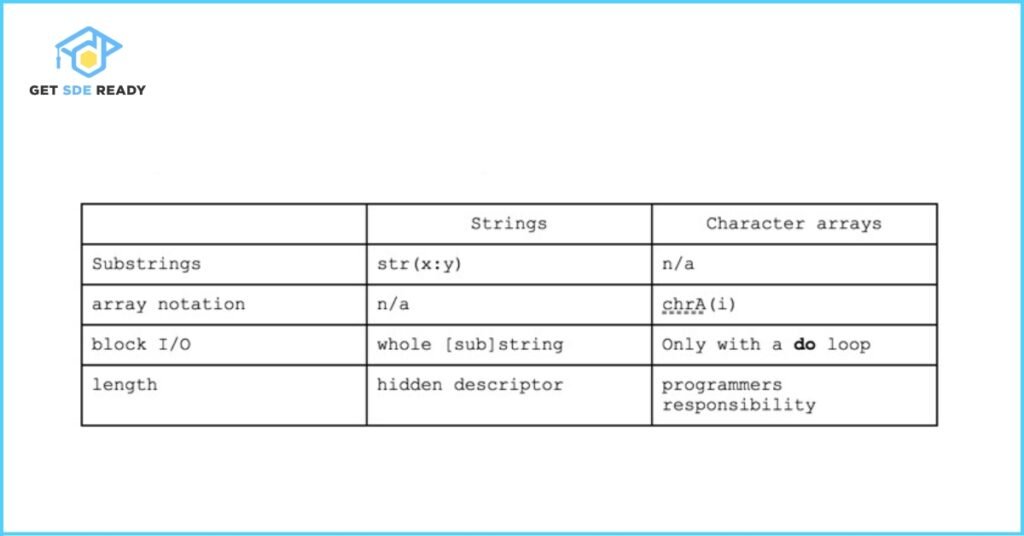
Linked Lists
6. Merge Two Sorted Lists
- Problem: Merge two sorted linked lists into one sorted list.
- Approach: Use a dummy node and compare nodes from both lists, merging iteratively. Time complexity: O(n + m).
7. Detect Cycle in Linked List
- Problem: Determine if a linked list has a cycle.
- Approach: Use Floyd’s cycle-finding algorithm (tortoise and hare). Time complexity: O(n).
8. Reverse Linked List
- Problem: Reverse a linked list.
- Approach: Iteratively update pointers to reverse links. Time complexity: O(n).
9. Remove Nth Node From End of List
- Problem: Remove the nth node from the end of a linked list.
- Approach: Use two pointers with a gap of n nodes. Time complexity: O(n).
10. Intersection of Two Linked Lists
- Problem: Find the intersection node of two linked lists.
- Approach: Traverse both lists to equalize lengths, then find the common node. Time complexity: O(n + m).
Trees
11. Binary Tree Inorder Traversal
- Problem: Perform inorder traversal of a binary tree.
- Approach: Use recursion or an iterative stack-based approach. Time complexity: O(n).
12. Maximum Depth of Binary Tree
- Problem: Find the maximum depth of a binary tree.
- Approach: Use recursive depth calculation. Time complexity: O(n).
13. Validate Binary Search Tree
- Problem: Check if a binary tree is a valid BST.
- Approach: Use inorder traversal to ensure nodes are in sorted order. Time complexity: O(n).
14. Symmetric Tree
- Problem: Check if a binary tree is symmetric.
- Approach: Recursively compare left and right subtrees. Time complexity: O(n).
15. Level Order Traversal
- Problem: Perform level order traversal of a binary tree.
- Approach: Use a queue for BFS traversal. Time complexity: O(n).

Graphs
16. Number of Islands
- Problem: Count the number of islands in a grid.
- Approach: Use DFS or BFS to mark connected components. Time complexity: O(m * n).
17. Course Schedule
- Problem: Determine if a course schedule can be completed without cycles.
- Approach: Use topological sort to detect cycles in a directed graph. Time complexity: O(V + E).
18. Clone Graph
- Problem: Clone an undirected graph.
- Approach: Use DFS or BFS with a hash map to track cloned nodes. Time complexity: O(V + E).
19. Graph Valid Tree
- Problem: Check if a graph is a valid tree.
- Approach: Ensure no cycles and all nodes are connected using DFS or Union-Find. Time complexity: O(V + E).
20. Shortest Path in Binary Matrix
- Problem: Find the shortest path in a binary matrix.
- Approach: Use BFS to find the shortest path. Time complexity: O(m * n).
Dynamic Programming
21. Climbing Stairs
- Problem: Find the number of ways to climb n stairs with 1 or 2 steps.
- Approach: Use bottom-up DP or Fibonacci sequence. Time complexity: O(n).
22. Coin Change
- Problem: Find the fewest coins to make a given amount.
- Approach: Use bottom-up DP to track minimum coins. Time complexity: O(amount * coins).
23. Longest Increasing Subsequence
- Problem: Find the length of the longest increasing subsequence.
- Approach: Use DP with binary search for optimization. Time complexity: O(n log n).
24. Word Break
- Problem: Check if a string can be segmented into dictionary words.
- Approach: Use DP to track valid segmentations. Time complexity: O(n^2).
25. Minimum Path Sum
- Problem: Find the minimum path sum in a grid.
- Approach: Use DP to compute minimum sums. Time complexity: O(m * n).
System Design
26. Design a URL Shortener
- Problem: Design a system to shorten URLs.
- Approach: Use hashing for short codes, store mappings in a database, and ensure scalability.
27. Design Twitter
- Problem: Design a simplified Twitter system.
- Approach: Focus on feeds, posts, followers, and database schema.
28. Design a Cache
- Problem: Implement an LRU cache.
- Approach: Use a hash map and doubly linked list for O(1) operations.
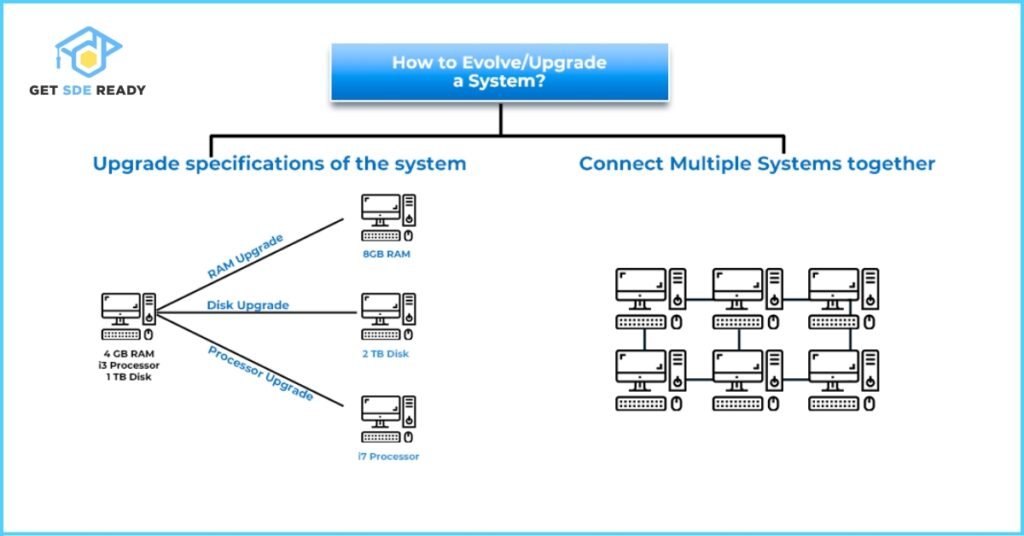
Behavioral Questions
29. Tell me about a time you failed. How did you handle it?
- Approach: Use the STAR method to describe a failure, actions taken, and lessons learned.
30. How do you prioritize tasks with multiple deadlines?
- Approach: Discuss prioritization techniques, such as assessing impact and urgency.
For detailed solutions, practice on platforms like LeetCode, HackerRank, or GeeksforGeeks, where community discussions and explanations are available. Books like Cracking the Coding Interview by Gayle Laakmann McDowell also provide in-depth solutions.
Resources for Preparation
To streamline your preparation, leverage these resources:
- Online Courses: Enroll in our Data Structures and Algorithms course, Web Development course, or Master DSA, Web Dev, System Design course. For additional skills, explore our Data Science course or crash course.
- Books: Cracking the Coding Interview by Gayle Laakmann McDowell and Elements of Programming Interviews by Adnan Aziz.
- Practice Platforms: LeetCode, HackerRank, CodeSignal, GeeksforGeeks.
- YouTube Channels: Back To Back SWE, mycodeschool, Tech With Tim.
Tips for Success
- Consistency: Dedicate 2-3 hours daily to coding practice to build muscle memory.
- Time Management: Create a weekly schedule and stick to it, balancing technical and behavioral preparation.
- Mock Interviews: Use platforms like Pramp or Interviewing.io to simulate real interviews.
- Networking: Connect with professionals on LinkedIn and seek referrals, which can increase your application’s visibility.
- Stay Positive: Learn from mistakes, celebrate small wins, and maintain a growth mindset.
Conclusion
Preparing for an SDE-1 role in 90 days is an ambitious but achievable goal with dedication and a structured approach. By mastering key skills, following the 90-day plan, and practicing common interview questions, you can position yourself as a strong candidate for top tech companies. The journey is as important as the destination—each step builds your knowledge and confidence.
Ready to take your preparation to the next level? Sign up for our SDE-1 preparation courses at getsdeready.com and stay ahead in your tech career.
FAQs
What is the difference between SDE-1 and SDE-2?
SDE-1 is an entry-level role, while SDE-2 requires 2-4 years of experience and involves more complex tasks and leadership responsibilities.
How important are referrals for getting an SDE-1 role at Amazon?
Referrals can significantly boost your application’s visibility, as they often receive priority in the hiring process.
What programming languages are most commonly used in SDE-1 roles?
Python, Java, and C++ are widely used, though specific requirements vary by company.
How can I improve my problem-solving skills for coding interviews?
Practice regularly on coding platforms, analyze solutions, and explore multiple approaches to problems.
Are there any specific books recommended for SDE-1 preparation?
Cracking the Coding Interview and Elements of Programming Interviews are highly recommended for comprehensive preparation.

DSA, High & Low Level System Designs
- 85+ Live Classes & Recordings
- 24*7 Live Doubt Support
- 400+ DSA Practice Questions
- Comprehensive Notes
- HackerRank Tests & Quizzes
- Topic-wise Quizzes
- Case Studies
- Access to Global Peer Community
Buy for 52% OFF
₹25,000.00 ₹11,999.00
Accelerate your Path to a Product based Career
Boost your career or get hired at top product-based companies by joining our expertly crafted courses. Gain practical skills and real-world knowledge to help you succeed.
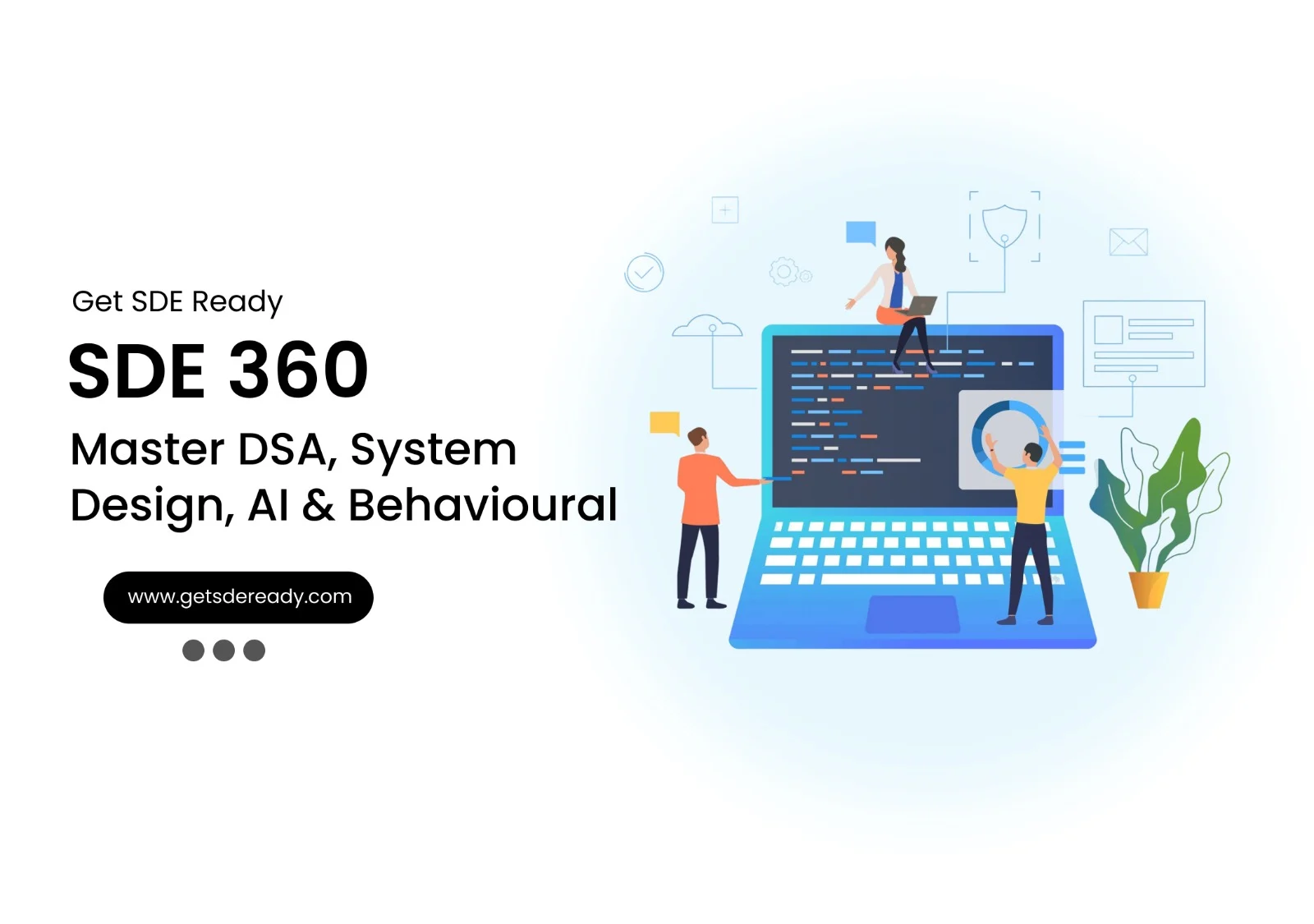
SDE 360: Master DSA, System Design, AI & Behavioural
- 100+ Live Classes & Recordings
- 24*7 Live Doubt Support
- 400+ DSA Practice Questions
- Comprehensive Notes
- HackerRank Tests & Quizzes
- Topic-wise Quizzes
- Case Studies
- Access to Global Peer Community
Buy for 50% OFF
₹39,999.00 ₹19,999.00

DSA, High & Low Level System Designs
- 85+ Live Classes & Recordings
- 24*7 Live Doubt Support
- 400+ DSA Practice Questions
- Comprehensive Notes
- HackerRank Tests & Quizzes
- Topic-wise Quizzes
- Case Studies
- Access to Global Peer Community
Buy for 52% OFF
₹25,000.00 ₹11,999.00
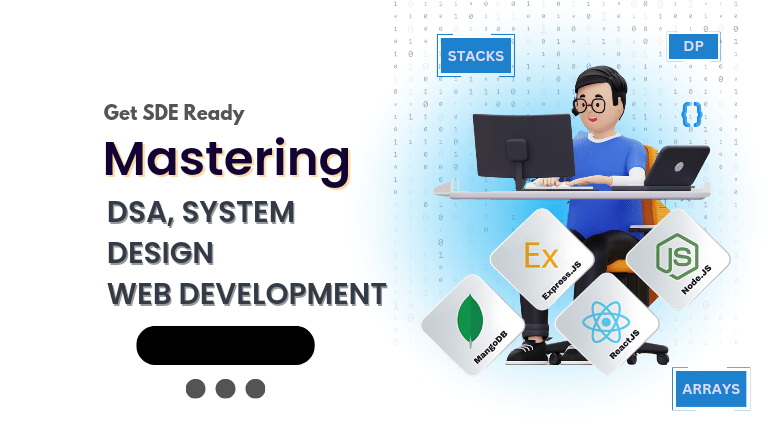
Fast-Track to Full Spectrum Software Engineering
- 120+ Live Classes & Recordings
- 24*7 Live Doubt Support
- 400+ DSA Practice Questions
- Comprehensive Notes
- HackerRank Tests & Quizzes
- 12+ live Projects & Deployments
- Case Studies
- Access to Global Peer Community
Buy for 51% OFF
₹35,000.00 ₹16,999.00
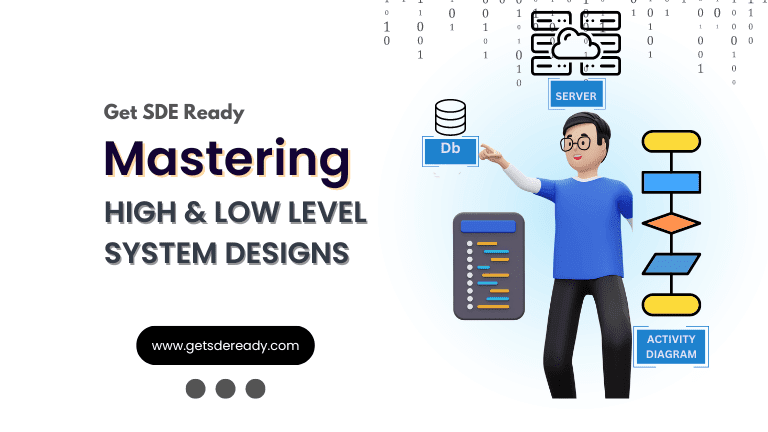
Low & High Level System Design
- 20+ Live Classes & Recordings
- 24*7 Live Doubt Support
- Case Studies
- Comprehensive Notes
- HackerRank Tests
- Topic-wise Quizzes
- Access to Global Peer Community
- Interview Prep Material
Buy for 60% OFF
₹20,000.00 ₹7,999.00
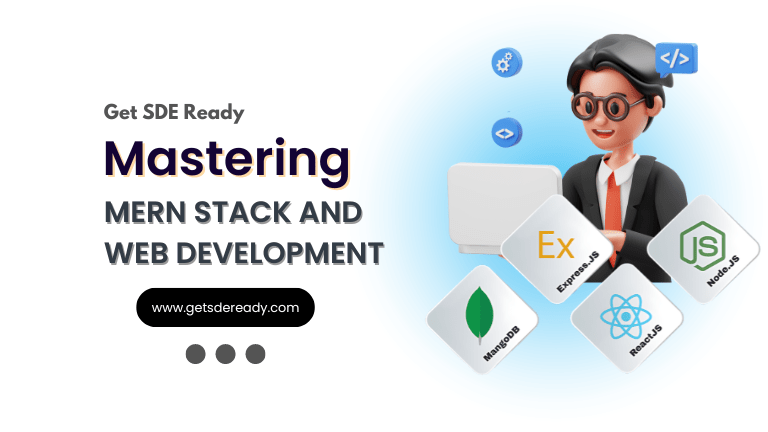
Mastering Mern Stack (WEB DEVELOPMENT)
- 65+ Live Classes & Recordings
- 24*7 Live Doubt Support
- 12+ Hands-on Live Projects & Deployments
- Comprehensive Notes & Quizzes
- Real-world Tools & Technologies
- Access to Global Peer Community
- Interview Prep Material
- Placement Assistance
Buy for 53% OFF
₹15,000.00 ₹6,999.00
Reach Out Now
If you have any queries, please fill out this form. We will surely reach out to you.
Contact Email
Reach us at the following email address.
arun@getsdeready.com
Phone Number
You can reach us by phone as well.
+91-97737 28034
Our Location
Rohini, Sector-3, Delhi-110085
